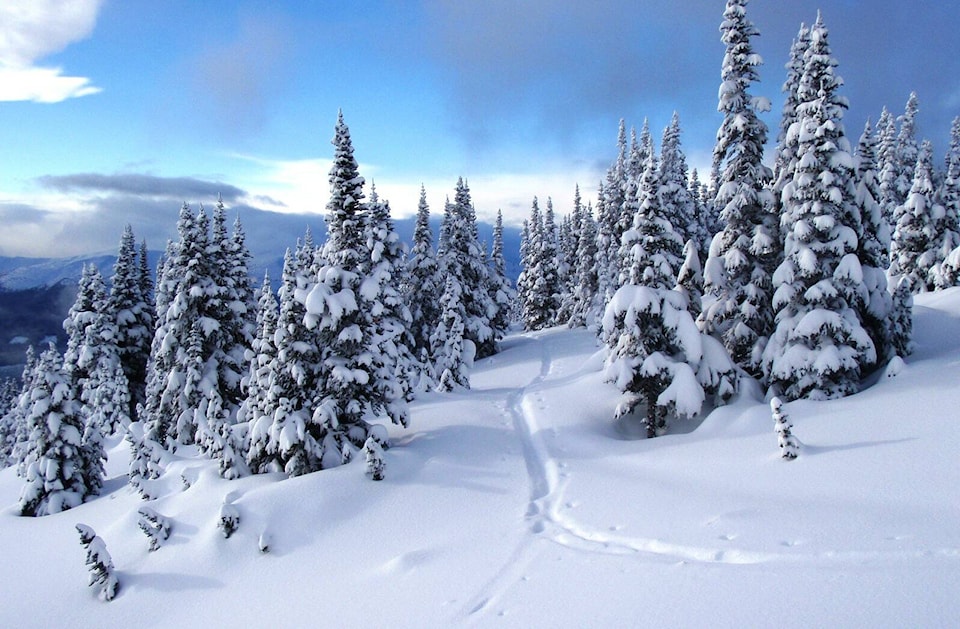During the cold snap we just went through, did you stop to wonder how the trees survive such temperatures? Animals develop thick winter coats or hibernate. We just put on lots of clothes, stay inside, build a fire, or go to warmer climes, but the trees must stay put and stick it out.
It’s not just the cold, but also the threat of dehydration due to lack of available water that trees must cope with in winter. One strategy used by most broad-leaved trees such as birch, aspen and cottonwood is to drop their leaves annually and go into a type of dormancy. However, most of our conifers (except for larches) do not lose their leaves (needles) annually but shed some of them every two or three years.
This saves energy by not having to produce all of them every year.
All tree leaves are major sources of water loss, but conifers that retain their needles (evergreens) have developed strategies to reduce this. The long narrow leaves mean that there is much less surface area (relative to leaf volume) from which water may be lost. Also, the surface of the leaves is covered by a thick waxy coat of a substance called cutin that reduces water loss.
Tree leaves are stippled with small pores called stomata that allow air (carbon dioxide and oxygen) into and out of the leaf so the leaves can breathe and carry out photosynthesis. The pores, often on the lower side of the needles, are opened or closed by means of guard cells.
When the pores are open there can be a significant loss of water from the leaves. To reduce this water loss the stomatal pores of evergreen conifer needles are located at the bottom of small cavities indented into the needle. The guard cells sit on the surface of the needle.
When the pores are closed, water vapour and vapour pressure accumulate in the cavities. Water vapour tends to move from high concentrations to low concentrations, so the overall effect of having closed, sunken stomata is reduced water loss.
To a certain extent, the bark of the tree protects the living tissues in the above-ground parts of the trees from freezing, but not always. If the liquid in living plant cells freezes, the ice crystals (with their sharp points) can puncture the delicate cell membranes so that the cell contents leak out and the tissues die.
This can happen when there is a sudden dramatic drop in the ambient temperature. The tree tissues inside cannot adjust fast enough from the warm to the sudden cold temperatures and the cells freeze and the trees crack loudly.
However, trees can adjust to extended extreme cold like -40C found in far northern forested areas by using a process called ‘extra-cellular freezing’. The water in the cells gradually oozes out into the spaces between the cells and freezes there so that the cell membranes of the living tissues are not damaged.
Given the above, you may well ask why most conifers retain their green needles. This is so they can take advantage of the winter thaws and the amazing mild conditions like we experienced through December 2023, to permit slow rates of photosynthesis.
There are other adaptations for dealing with the winter cold and especially snow loads. I think I will leave that until next time.
